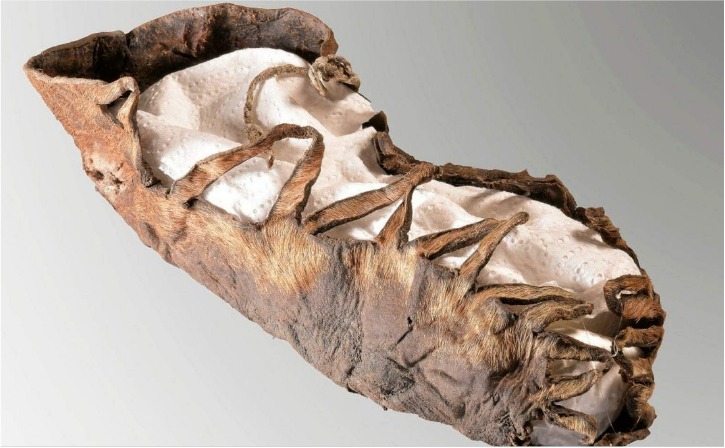
In a remarkable archaeological find, a well-preserved children’s shoe, dating back more than 2,000 years, has emerged from the depths of Dürrnberg near Hallein in Salzburg. This extraordinary discovery sheds light on the lives of Iron Age miners and provides valuable insights into the past. The shoe’s excellent condition is attributed to the unique preservation conditions within an ancient salt mine tunnel, where the presence of salt played a pivotal role in safeguarding the leather shoe and even its lacing.
Exploration by German Mining Museum Researchers
A team of researchers from the German Mining Museum Bochum and its mining archeology research department has been diligently exploring Dürrnberg near Hallein since the year 2001. During their most recent excavation campaign within the Georgenberg tunnel, a former salt mine tunnel, the team, led by Thomas Stöllner, unearthed this astonishing relic—a child’s shoe that defied the ravages of time. Stöllner described its state of preservation as nothing short of “outstanding.” Remarkably, the dimensions of this ancient footwear roughly align with a modern shoe size 30, indicating that it was designed for a child of approximately five years old.
An Unusual Encounter with Organic Preservation
The presence of organic materials that endure the test of millennia is a rare occurrence in the realm of archaeology. Organic remnants like this exceptionally well-preserved shoe typically degrade and disintegrate over time. However, in this exceptional case, the salt-rich environment within the old mine tunnels contributed to the remarkable preservation. This discovery offers a truly unique window into the lives of Iron Age miners, providing a trove of valuable information for scientific investigation. Notably, the presence of a child’s shoe hints at the challenging conditions that children endured as part of the mining activities.
Unlocking the Secrets of Ancient Footwear
What elevates this discovery even further is the survival of the shoe’s lacing, crafted from flax or linen. This intact element provides researchers with invaluable insights into how these shoes were fastened and worn by their ancient owners. Based on the shoe’s design and features, experts estimate that it originated from the 2nd century BC, offering a glimpse into the fashion of that era. In close proximity to the shoe, archaeologists also stumbled upon additional organic remnants, including half of a wooden shovel blade and fragments of fur with lacing, likely belonging to a fur hood.
Continued Excavations and Quest for Knowledge
The journey of exploration is far from over. The excavations at Dürrnberg are poised to continue in the coming years, with the ambitious goal of comprehensively uncovering the extent of the mining industry in this historical site. This ongoing research endeavor seeks to provide a detailed understanding of the work and lifestyles of Iron Age miners and aims to reveal the dimensions of the mining halls within Dürrnberg. As this captivating discovery demonstrates, archaeological findings continue to captivate our imagination and provide unparalleled insights into the distant past.
